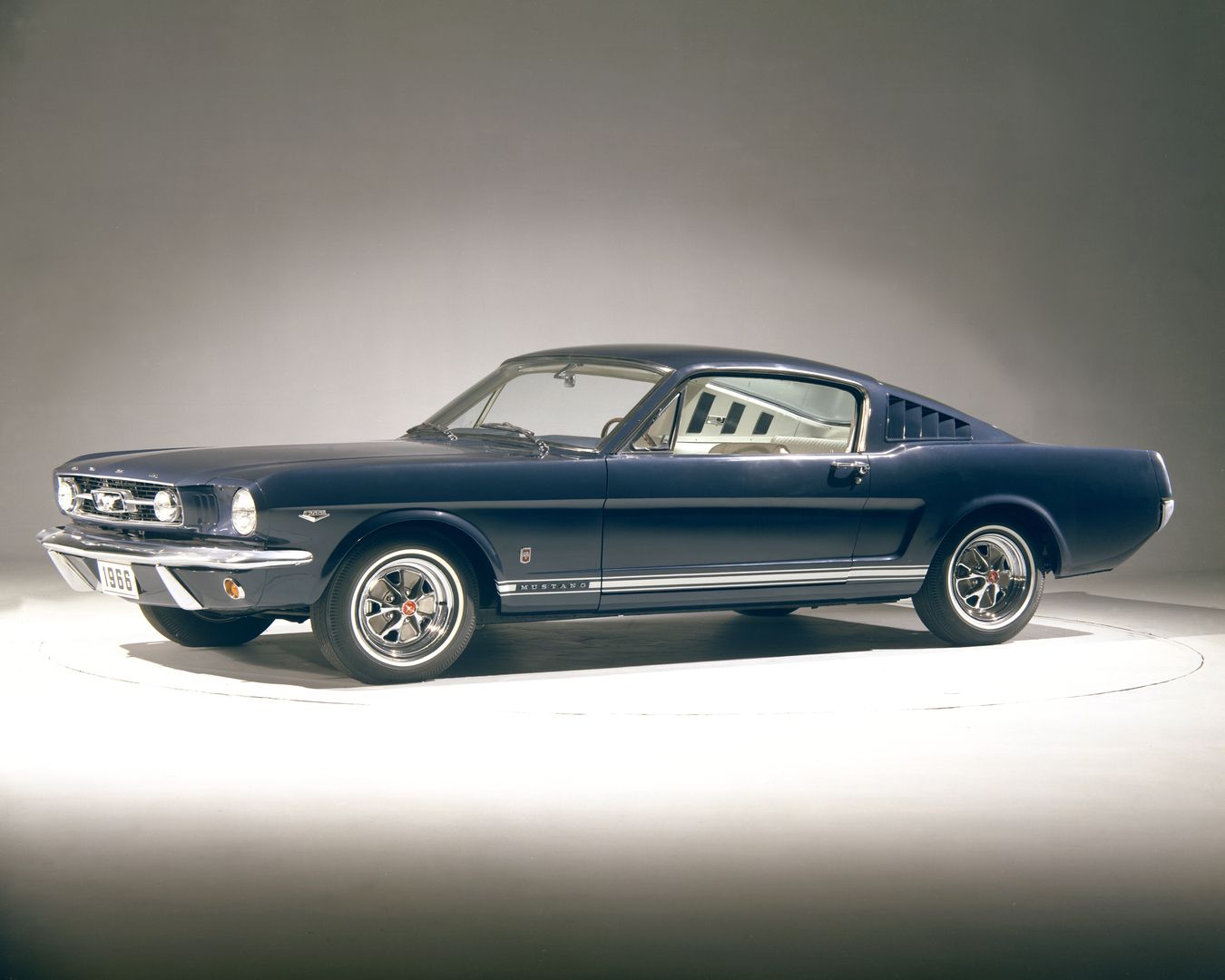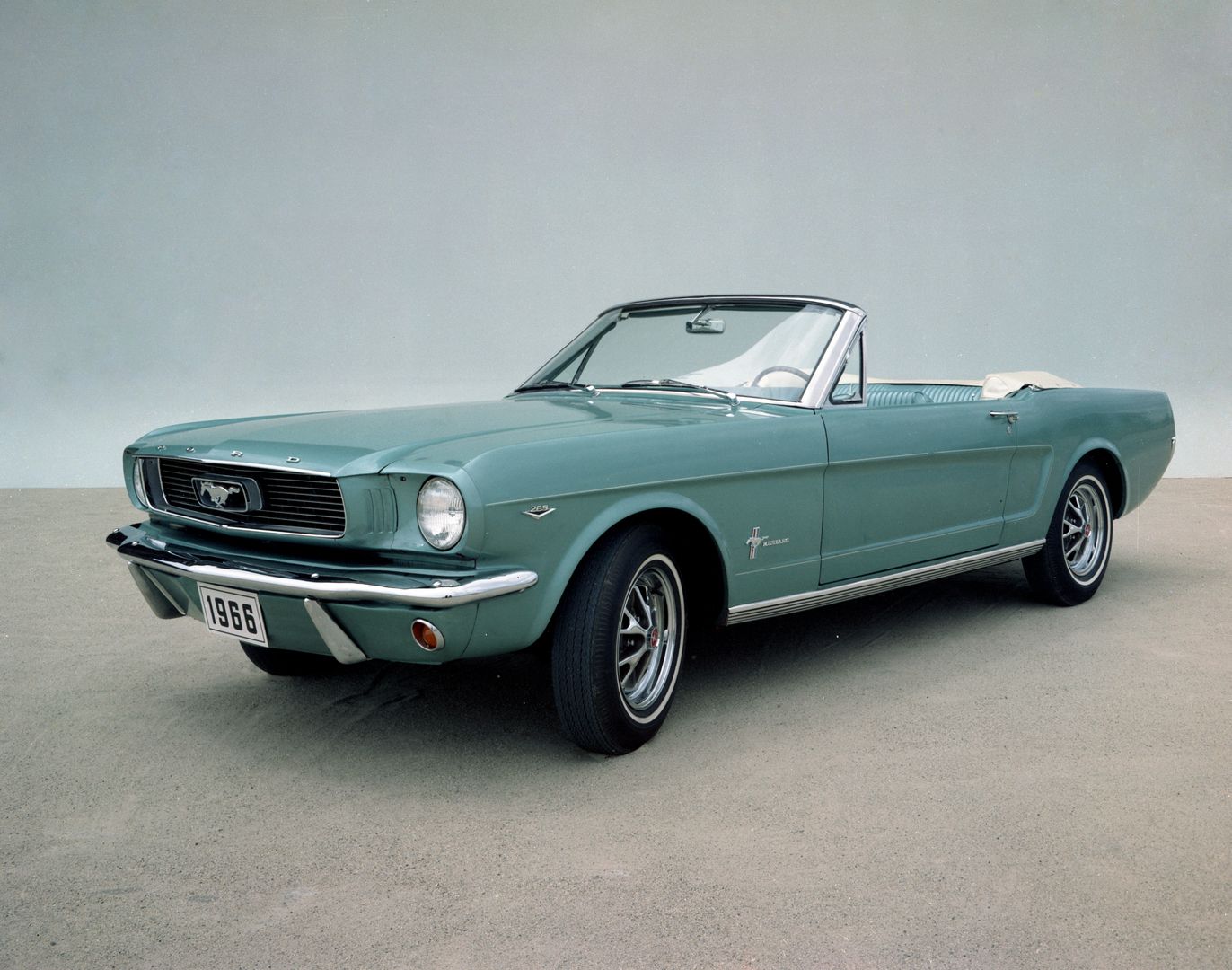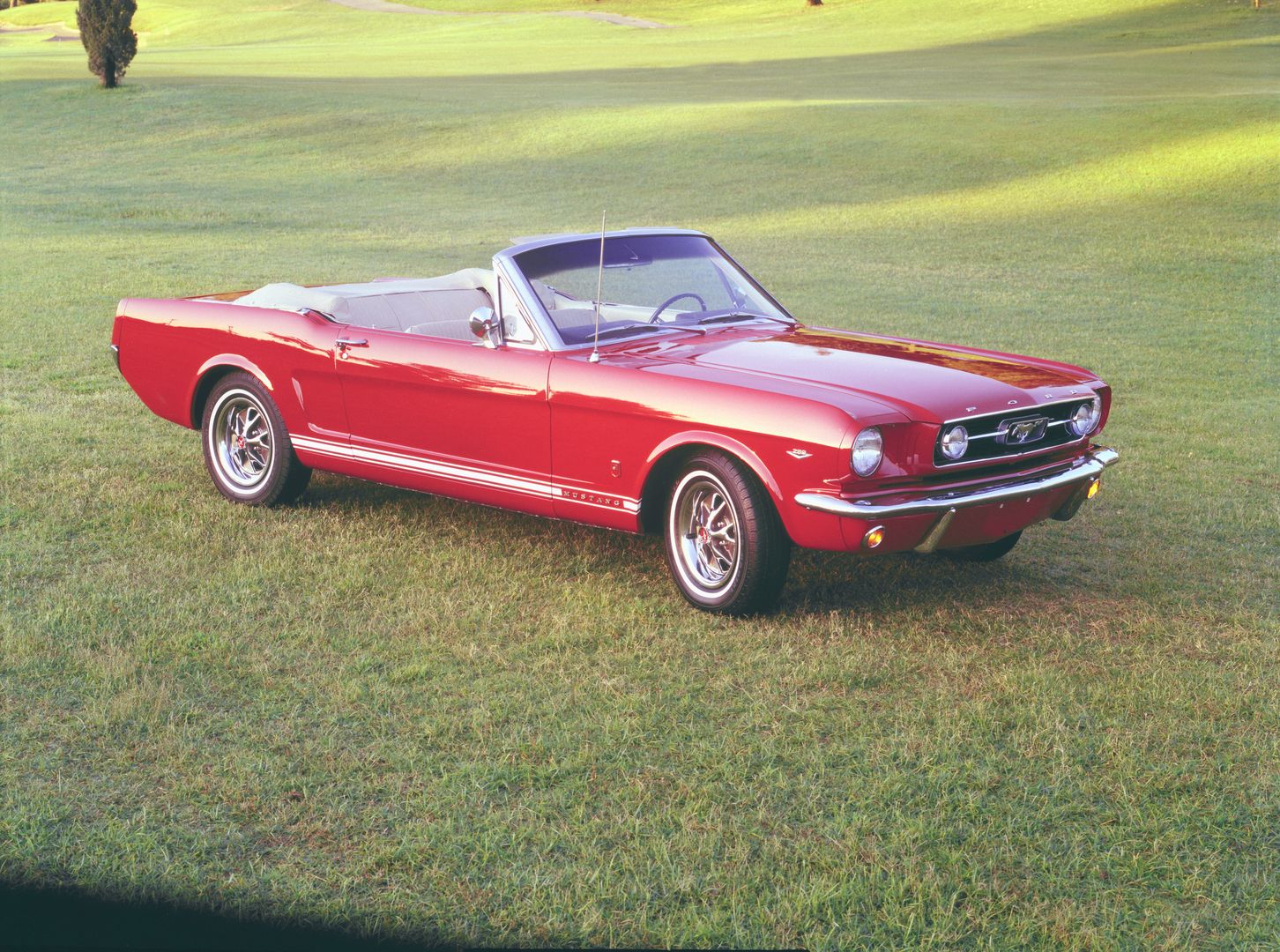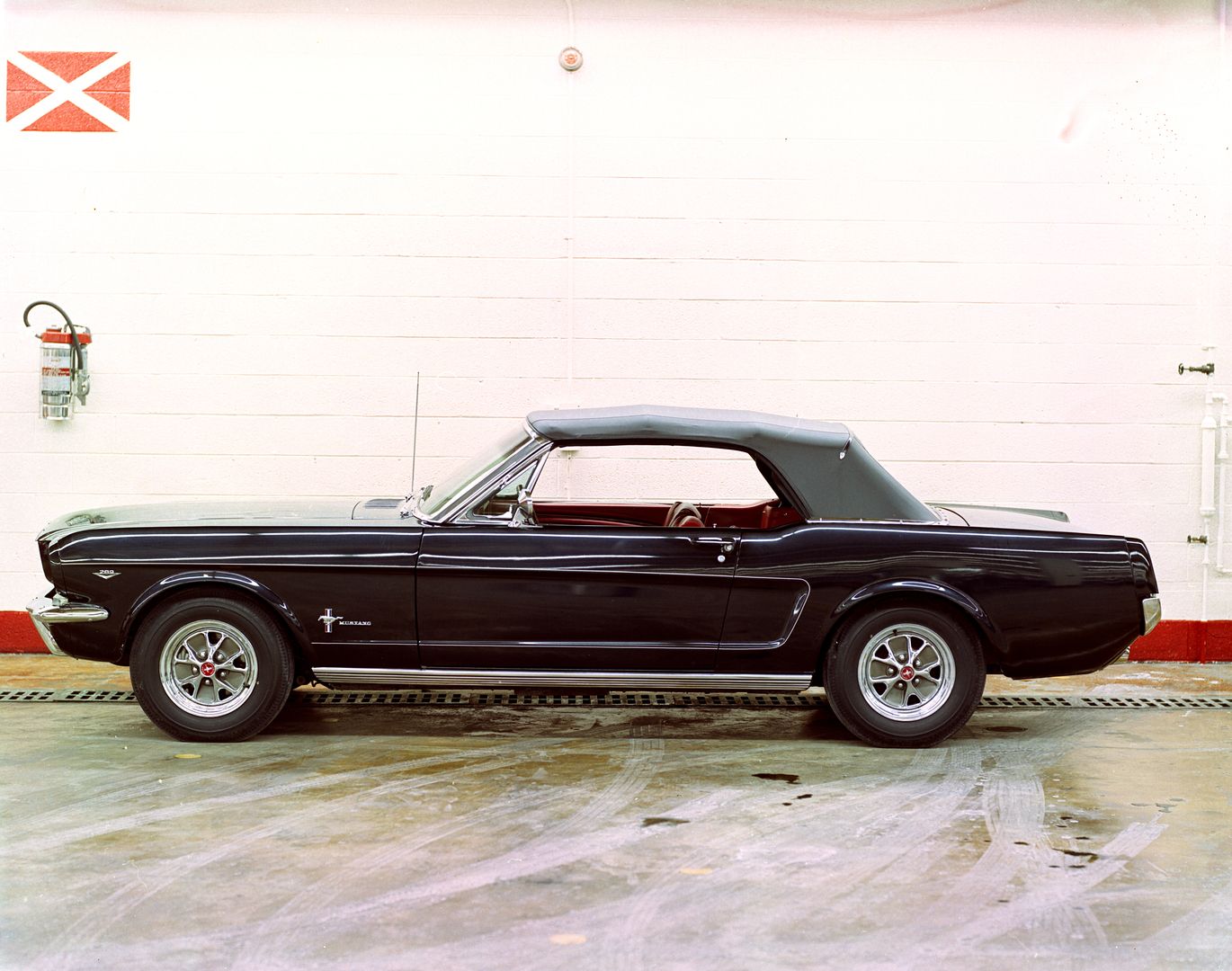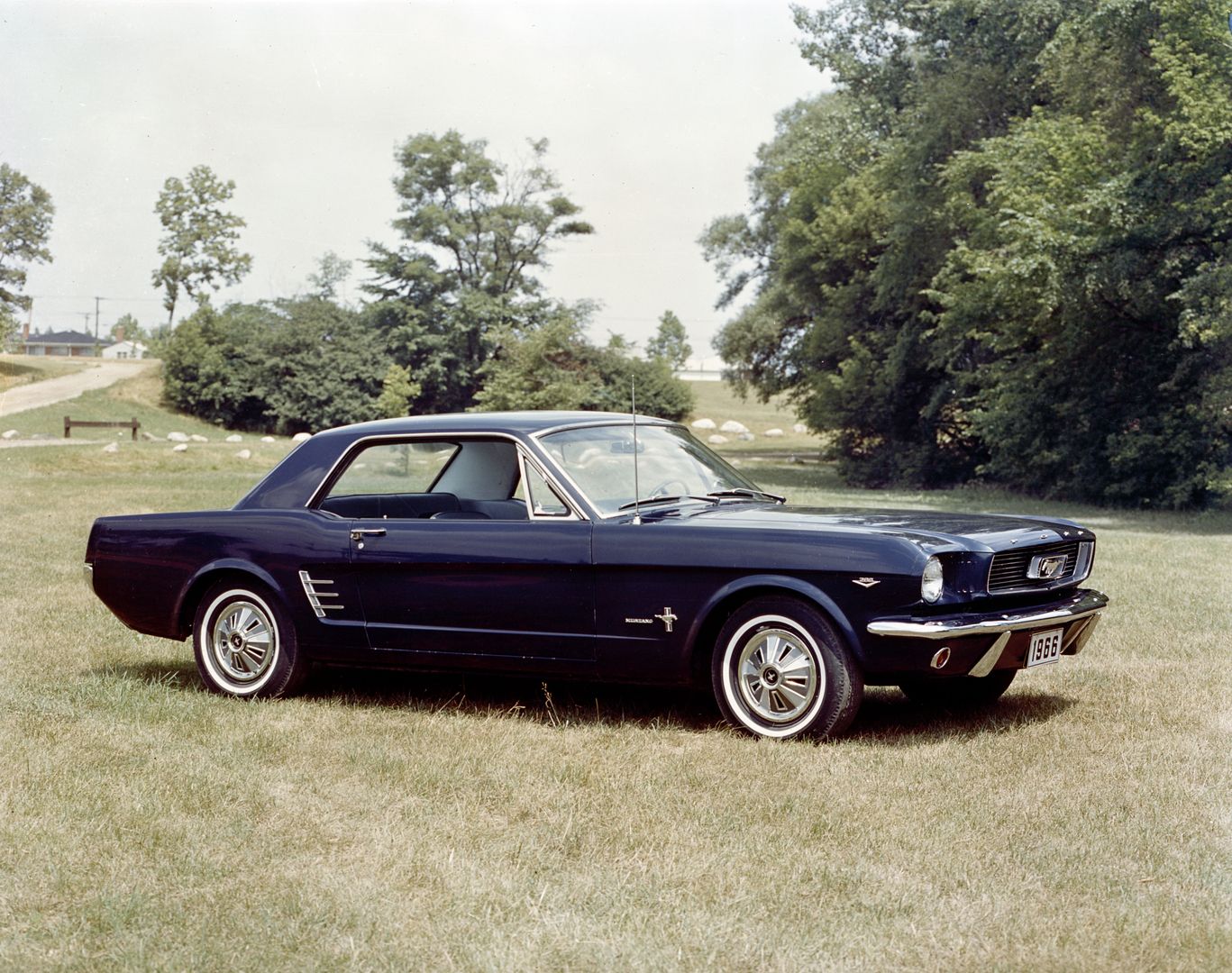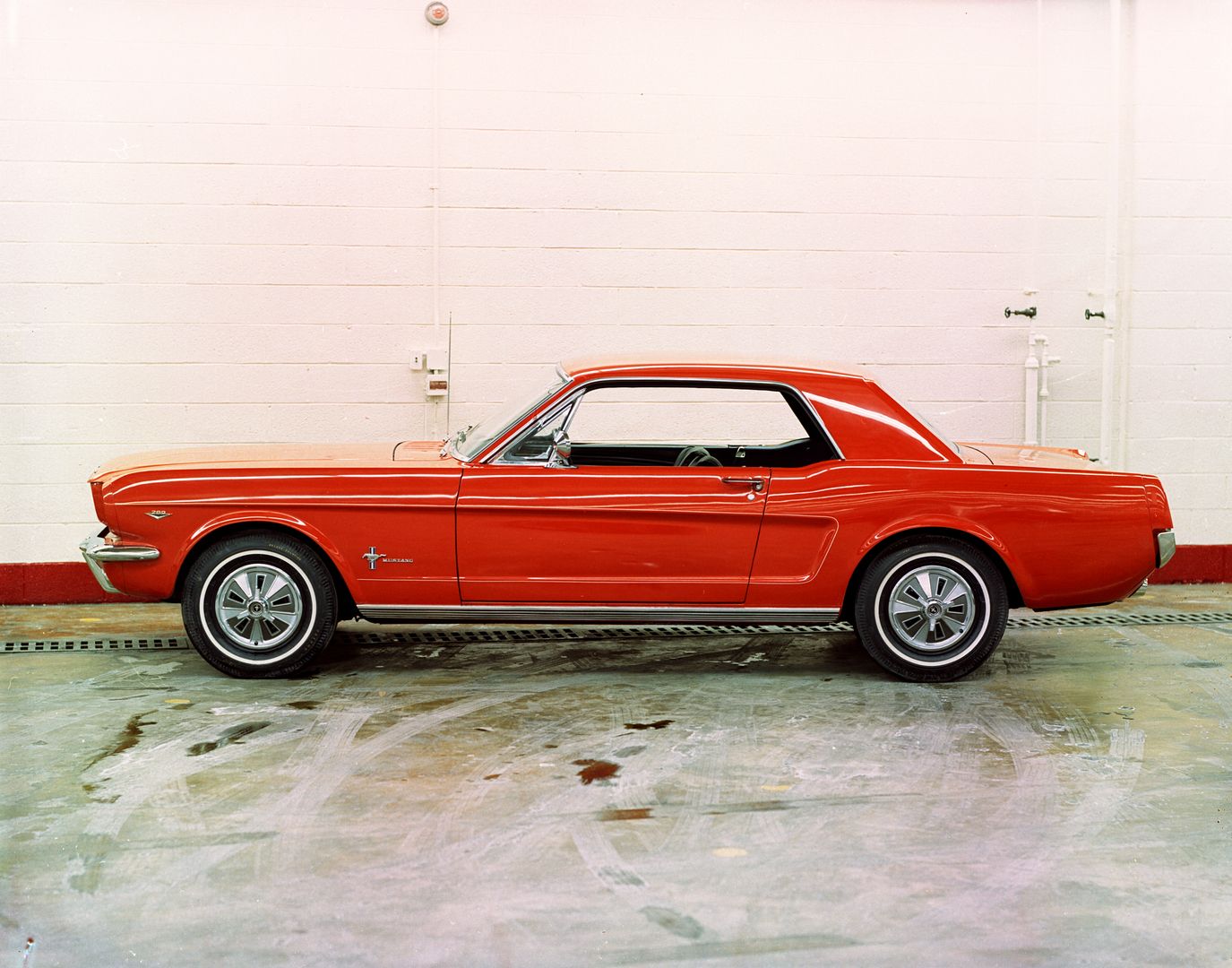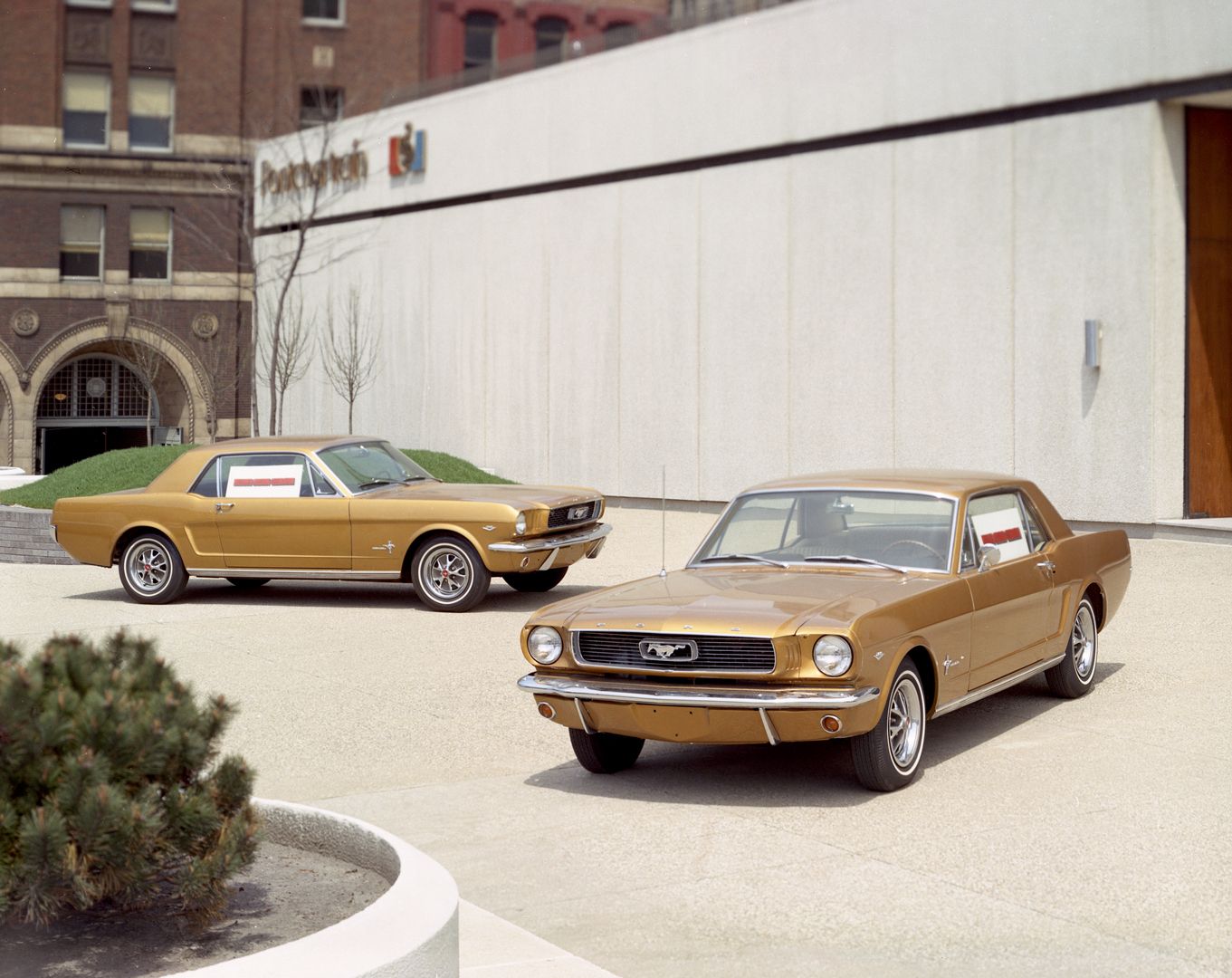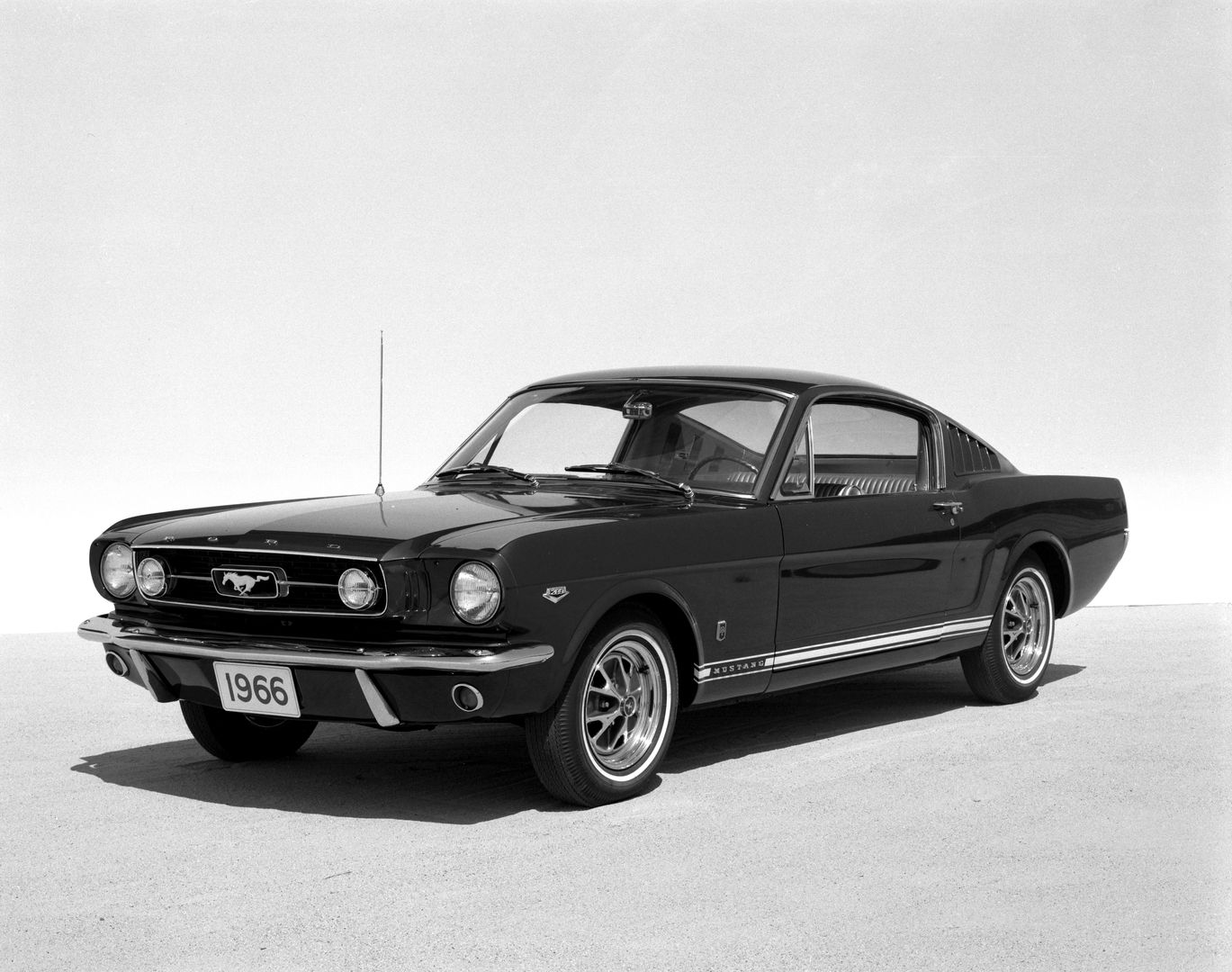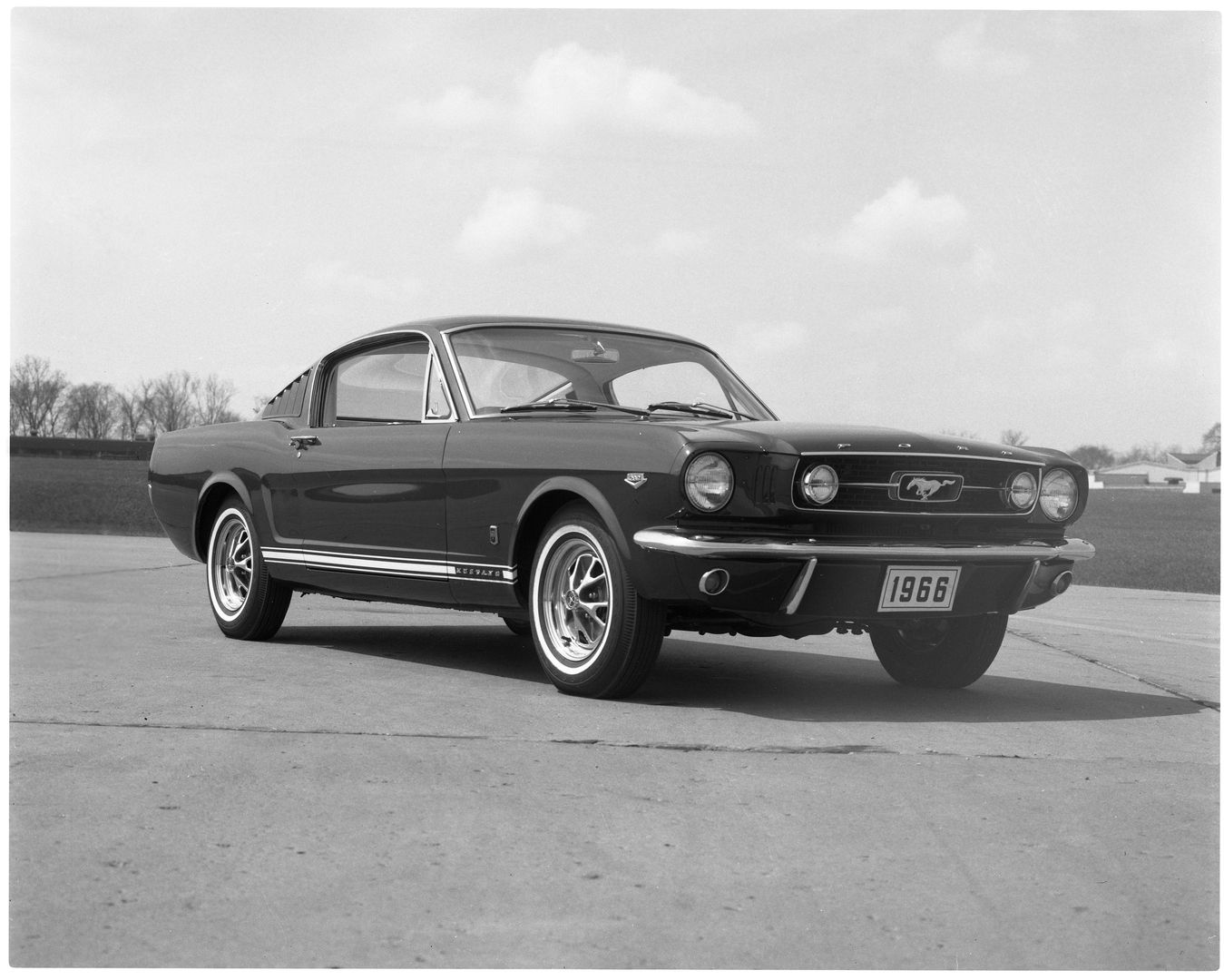The 1966 Ford Mustang is arguably the most iconic muscle car ever built. Even though the newer versions, such as the Shelby GT500, are beyond powerful, the first generation of 'Stangs holds the hearts of all true classic car lovers. In '66, it outsold the competition by leaps and bounds, selling over 600,000 units. Back then, this beautiful machine could be picked up for a mere $3,000 or less, while today, they auction off for more than $400k, with the median average being just over $22,000. It is a dream machine that puts the "PONY" car on the map. Let's take a look at everything that you need to know about the 1966 Mustang.
Ford Could Barely Keep Up With The Demand
The Mustang was the brainchild of Lee Iacocca. After it burst onto the scene in mid-1964, the Ford Mustang could barely keep it available in nationwide showrooms. In fact, on the first day of sales, almost all the 22,000 cars available were grabbed up. Because of this and the demand for the following year's model, Ford made very few changes to avoid any significant alterations to the design. Even then, with three production sites running full-time, the plants could barely keep up with the demand from the public. By the end of the sales year, 607,578 Mustangs were sold, with the idea that more would have been unloaded if the assembly plants could have produced them.
First-Year Of The Front Pony Emblem
The one thing that most car lovers recall when the topic of Mustangs comes up is the one-of-a-kind floating Mustang emblem placed on the outside of the grill. When looking in the mirror at a sleek 'Stang, the chrome emblem stands out and sticks in the mind. The 1966 Ford Mustang was the first year this emblem was installed, creating an unforgettable beginning of the now famous, and adored "PONY" car. This emblem lives on today, signifying that the vehicle it is attached to is a beast to be reckoned with, not to be taken lightly on or off the track.
First-Year Standard Five-Cluster Instrument Panel
Another common aspect of the first generation Mustang is the luxurious (for the time period) and eye-catching interior, especially the five-cluster instrument panel. The '66 model year was the first in the line of many that offered this style of instrument cluster as standard equipment. The speedometer was typical on most vehicles, even before the 1966 Mustang came to be, but for this year, the company also included a fuel gauge, oil pressure gauge, volt gauge, and a water temperature gauge. All of which can still be found in the modern car, in one way or another.
First Shelby And Hertz Combination In GT350
Anybody that claims to be a car lover knows the story of Carroll Shelby. He was a designer and innovator who worked on many projects over the years after gaining fame in the racing world during the 1950s. In 1966, he joined forces with the Ford teams to build a muscle car that was over the top, bigger, and more powerful than any other car on the roads. To make it even better, they paired up with Hertz, one of the premier car rental agencies in the nation.
Rent-A-Racers Were The '66 Mustang Shelby
In 1966, one of the most memorable things that travelers and low-income workers had going for them was the ability to rent a Shelby Mustang GT350-H to drive around in. The Hertz and Ford Mustang collaboration made this possible by producing the Shelby for the car rental agency throughout the US. The Rent-a-Racer program was a smash hit. One of those business collaborations that would go down in history as a huge success. That is until the time came to see the used cars off to make room for new ones.
'66 Mustang Came With Four Engine Options
The Ford Mustang was marketed to the public as an economical, luxurious, performance car designed for all ages. The choice of motors offered allowed the proud new owner the options of the three types of variations. The bigger the motor, the better the performance, but the worse the fuel economy. The original six-cylinder is the engine that came with most of the '66 Mustangs unless they were ordered with one of the V-8s. The 289 that could be swapped out for the V6 could come with a two or four-barrel carburetor. The final option was the 289 HiPo with a four-barrel carb. All four motors gave the car an attitude of its own. An attitude that would fit right in with the temperament of the owner.
'66 Mustang Came In Four Styles
Ford Mustang has offered various model types throughout the years, including 1966 when the "PONY" car came to life. The two-door sedan was one of the leading cars offered on the market, along with the convertible that did not quite reach the sales amounts of the sedan. The third offering was the Shelby GT350, the powerhouse version of the year. The fastback was the fourth and is the most sought-after '66 Mustang today. All four model types combined to achieve record-breaking sales goals, far exceeding the estimated need.
There Were Eight Mustang Trims In 1966
The 1966 Mustang did not end with the four basic versions. The company produced 8 variations of the 'Stang, including some worth a mint. The first variant was the Shelby GT350-H, which was already covered. The second was the basic models upgraded with the GT package, which made them more race ready. The next was the High Country Special (HCS) version, which only had two slight differences, the brass nameplate and the colors of the body. The fourth variant was the Million Dollar Mustang which was designed with a unique personalized dash plate and optional upgrades at no extra cost. The Sprint 200 Limited Edition was next, offering upgrades for the 6-cylinder engine. The sixth was the Anniversary Gold Edition with minor differences, including a gold paint job. The seventh variations were the Players Special Edition, which came with a two-tone paint job. Next was the T-5 which was the Mustang that was shipped out to Germany.
Ford Mustang Offered Three Transmission Options
It may not seem like an essential part of Mustang history, but when driving, the type of transmission in the car could make the difference between traveling to a relative's house without stopping for fuel or a trip down the quarter-mile track in first place. The primary option for the 'Stang was the three-speed manual transmission, which could be upgraded to the four-speed transmission. The other option was the three-speed automatic, offered by Ford for a few dollars more.
The 1966 Mustang Is Featured In Hit Films
When it comes to a Mustang in hit films, the one that will always come to mind is "Eleanor." This is the car in Gone In 60 seconds that was always a target for car thieves, but it was one that would always give them the most trouble. Other than that movie, though, were ones such as The War of the Worlds in 2005. Plus, it cannot be forgotten that it is one of the prize cars parked in the garage of the ever-popular car collector Jay Leno.
FAQ
Q: Why is the 1966 Ford Mustang considered to be the best Mustang of all time?
Ford sold over 600,000 copies of the 1966 Mustangs, which makes it the best-selling Mustang by year to date. It was so popular that the assembly lines had difficulty keeping up with the demand. Even today, the '66 'Stang is sought after by collectors worldwide, especially the Fastback, designed to be a true muscle car.

